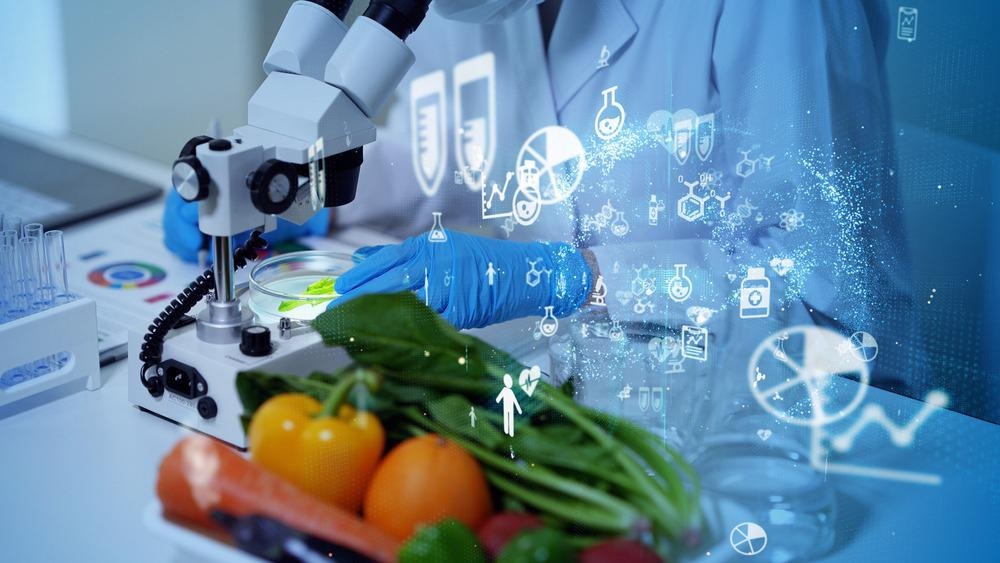It is imperative to detect food contaminants to protect people from potential adverse effects. In a new study published in Food and Chemical Toxicology, scientists have summarized the advancements in graphene-based electrochemical sensors for determining food pollutants.

Study: Recent developments on graphene and its derivatives based electrochemical sensors for determinations of food contaminants. Image Credit: metamorworks/Shutterstock.com
Effects of Food Contaminants on Humans
Food provides nutrition and other elements essential for life, and every human being has a right to safe food products.
Food adulteration or contamination occurs by both natural and artificial means. It can occur in every step associated with food production, processing, transportation as well as during its storage.
According to the World Health Organization, contaminated food can result in more than 200 types of diseases in human beings. Scientists have stated that the key source of food contamination is environmental pollutants that are omnipresent.
Detection of food contaminants is essential to ensure food safety. Scientists use several analytical techniques to detect food pollutants, including spectrophotometry, immunological assays, electrophoresis, microfluidics, and many other coupled techniques.
Although these analytical techniques are highly sensitive and accurate for detecting food contaminants, they contain some limitations, including costly instruments, non-portable, considerably high processing time, and the requirement of skilled personnel for their operation. Thereby, it is important to develop a low-cost, portable, easy to operate, and sensitive method to detect food contaminants in real samples.
Electrochemical Sensors for the Detection of Food Contaminants
Electrochemical sensors are used to detect and quantify analytes (e.g., pollutants) by redox processes. Scientists have developed several electrochemical sensors, which are used in medicine, industrial processes, and for monitoring environmental pollution. The main advantages of electrochemical sensors are portability, high sensitivity, ease of operation, and good selectivity.
Typically, electrochemical sensors contain three electrodes, namely, working, counter, and reference, which are placed in a cell containing an electrolytic solution. The device is connected to an electrochemical analyzer with a computer system.
Previous studies have revealed that nanomaterial-based electrodes exhibit increased sensitivity, improved selectivity, and ultra-low detection limits. This is because nanomaterials possess unique shapes, sizes, structures, high electrical and thermal conductivity, large surface-to-volume ratio, and stability.
For instance, reduced graphene oxide (RGO) nanosheets exhibit significant electrical conductivity with low resistance which is beneficial for the development of electrochemical sensors.
Graphene-based Electrochemical Sensors
Graphene is considered to be a promising electrode material in electrochemical sensors due to its rapid detecting capacity, lower overpotential, and the capability to detect multiple analytes simultaneously in real samples. Compared to other carbon nanomaterials, graphene-modified electrodes exhibit excellent detection capacity for cadmium ions with an ultra-low detection threshold.
Graphene exhibits superior electrochemical performance because of its honeycomb-like, monolayer, two-dimensional carbon sheet structure. All the carbon atoms are linked via sp2 hybridization. Additionally, it possesses multiple electroactive and analyte absorption sites, high conductivity, and low resistance.
Derivates of graphene, such as GO and RGO, possess varied chemical functional groups (e.g., hydroxyl and carboxyl) and are popularly used to develop electrochemical sensors.
Graphene-based Electrochemical Sensors in the Detection of Food Contaminants
Scientists have developed graphene-based electrochemical sensors for the quantitative analysis of food dyes. rRGO (eRGO)/screen-printed carbon electrode (SPCE) has been developed to detect tartrazine and sunset yellow chemical food dyes, which are commonly used food colorants in energy drinks, soft drinks, and juices. Researchers have also coated graphene nano-mesh on the surface of a glassy carbon electrode (GCE), which acts as an amaranth sensor. Amaranth dye is often detected in chocolate and fruit drink samples.
The efficiency of the graphene-based electrochemical sensors depends on several parameters, including the concentration of the modified graphene nanosheet, pH, functions of the incorporated nanomaterials, number of electroactive sites, surface area, etc.
Scientists have stated that the accumulation of pesticides in agricultural produce, if consumed, can adversely affect humans. The presence of these contaminants can be detected using graphene electrodes. For instance, scientists have developed an RGO/gold electrode to identify propamocarb (a fungicide) in cucumbers. Similarly, nitrogen-doped holey graphene/GCE allowed the detection of methyl parathion at a picomolar level.
Graphene-based electrochemical sensors are also used to detect inorganic food contaminants, such as mercury, lead, and cadmium ions. Scientists have developed an eRGO sensor to detect antimony in food products. Similarly, the eRGO/GCE sensor is used to detect antimony in celery, lettuce, and canned drink samples. The sulfur-doped C3N4/graphene composites-based sensor can detect the presence of mercury, cadmium, and lead ions at trace levels. Additionally, chloride, nitrite, nitrate, and sulfite are also detected in food samples.
Future Outlook
Scientists have developed both doped-graphene and graphene nanocomposites-based electrochemical sensing probes to detect organic and inorganic food pollutants. Some of the limitations of the available graphene-based electrochemical sensors include the lack of operational stability and reproducibility of the electrodes. In the future, researchers must develop standard electrochemical sensors for food pollutant analysis.
Reference
Suresh, R. et al. (2022) Recent developments on graphene and its derivatives based electrochemical sensors for determinations of food contaminants. Food and Chemical Toxicology. https://www.sciencedirect.com/science/article/pii/S0278691522003672?via%3Dihub
Disclaimer: The views expressed here are those of the author expressed in their private capacity and do not necessarily represent the views of AZoM.com Limited T/A AZoNetwork the owner and operator of this website. This disclaimer forms part of the Terms and conditions of use of this website.